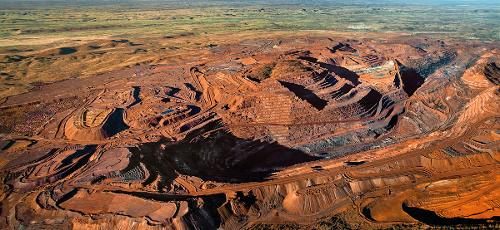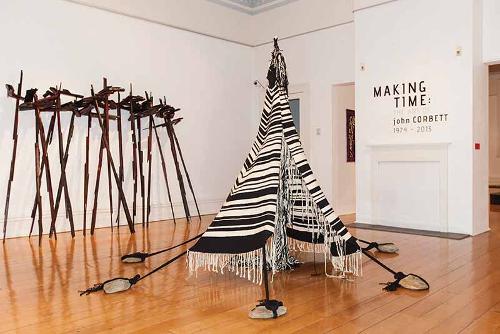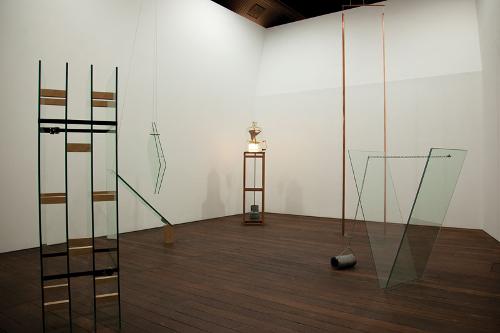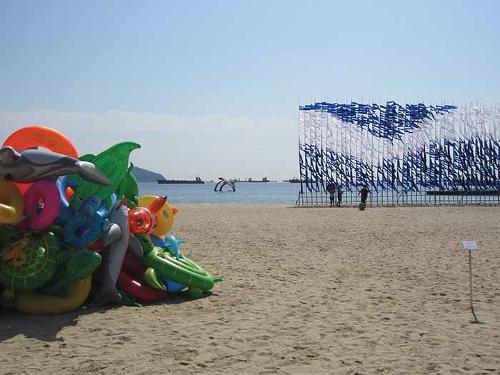.jpg)
The MONA folk like to make a point of being different and disrespecting the pomposities and conventions of the stuffy art museum world. So The Red Queen essayist Elizabeth Pearce tells us she has morning sickness, and much information about her boyfriend/fiancée/baby-daddy/husband - his status changes during the course of the essay. Apart from that, well what is she saying?
Something drawing on scientific thinking about the function of art – various authorities are quoted and MONA is planning a future exhibition where these 'science types' will be involved. The Red Queen theory, originally proposed by evolutionary biologist Leigh Van Valen, is about having to adapt just to stay in the same place. It references the Red Queen in Lewis Carroll’s Alice in Wonderland. But is art about evolutionary adaptation? This seems very hard to prove or even to exemplify. Do artists really have more sex, hence more babies, than people in other professions?
Being disrespectful myself I am looking back on my enigmatic The Red Queen notes trying to decipher my impressions of three months ago. At least I found them which was quite a surprise... One reflection I made was that while MOMA, the acronym of the Museum of Modern Art, sounds like your mother, MONA sounds more like a sexy girlfriend.
On attending the media preview of The Red Queen I did think, with some pleasure – something new is being born here, as I heard the specially commissioned Suspended funeral choirs from the future by Christopher Townend playing through the vast space next to the great sandstone wall. Then, as usual, I added my heartbeat to the many large bulbs of Rafael Lozano-Hemmer’s work Pulse and wandered on down to where two seriously altered ping-pong tables confounded normal playing, while Chen Zhen’s trampoline with bells (balls?) under it was being bounced on next to videos by Ali Kazma showing retired butchers going on and on about meat. Then there were daggy Red Riding Hood illustrations by the Rabus family, and a lot of outsider artist Henry Darger’s drawings hung in a darkened room in free floating frames – he used both sides of the page so some are upsidedown. And on to untitled 2013 (running out of time) – the tea ceremony in a mirrored room commissioned by Rirkrit Tiravanija, the When Faith Moves Mountains (making of) video by Francis Alÿs, Zhang Huan’s Berlin Buddha made from incense ash, Anna Halprin’s video Self Portrait Dancing my Cancer and so on.
I have to say that I think of science as practical and was expecting the exhibition to involve more participation, like the Questacon National Science and Technology Centre in Canberra or the Investigator Science Centre (sadly closed in 2006) in Adelaide where my son and I spent many happy hours. When I got to Kutlug Ataman’s work Paradise, a room full of armchairs with TVs in front of them on which Turkish fringe dwellers tell you about their lives, I expected that there would be a portion of the work that functioned like Lozana-Hemmer’s so that new stories by visitors or Tasmanian locals could be added. Perhaps one of the new things that I thought might be being born at MONA is art recording/collecting stories, and heartbeats, from ordinary people everywhere, even those with two heads.
The opening days of The Red Queen included nude Winter Solstice swimming, mass BBQs, Todd McMillan’s Ten Years of Tears (failure as an artform), the many moods of Dark Mofo, Ian Burns’ witty and confounding Afloat Asunder at the Tasmanian Museum and Art Gallery’s Bond Store, the dreamlike immersion of Beam in Thine Own Eye (currently showing at the Sharjah Art Museum) and more. Dark Mofo included the fantastic Ryoji Ikeda Spectra (Tasmania) where 49 custom made Xenon searchlights set in a grid on Regatta Point near the War Memorial pierced the sky like a message to outer space. This extraordinary work included sound which could be heard all over Hobart until 11pm – ting da da da, ting da da da. And at the opening of The Red Queen a two piece drums and slide guitar band from Launceston played raw rock and the doors were open to all.
On October 4 it was announced that international scientists and researchers are teaming with artists and MONA in a project to clean up the River Derwent where zinc, mercury, lead, cadmium and copper lie thick in the sediment. A heavy metal music festival will be held in January. Maybe new worlds are being born in Tasmania, certainly there is a lot of movement there.












